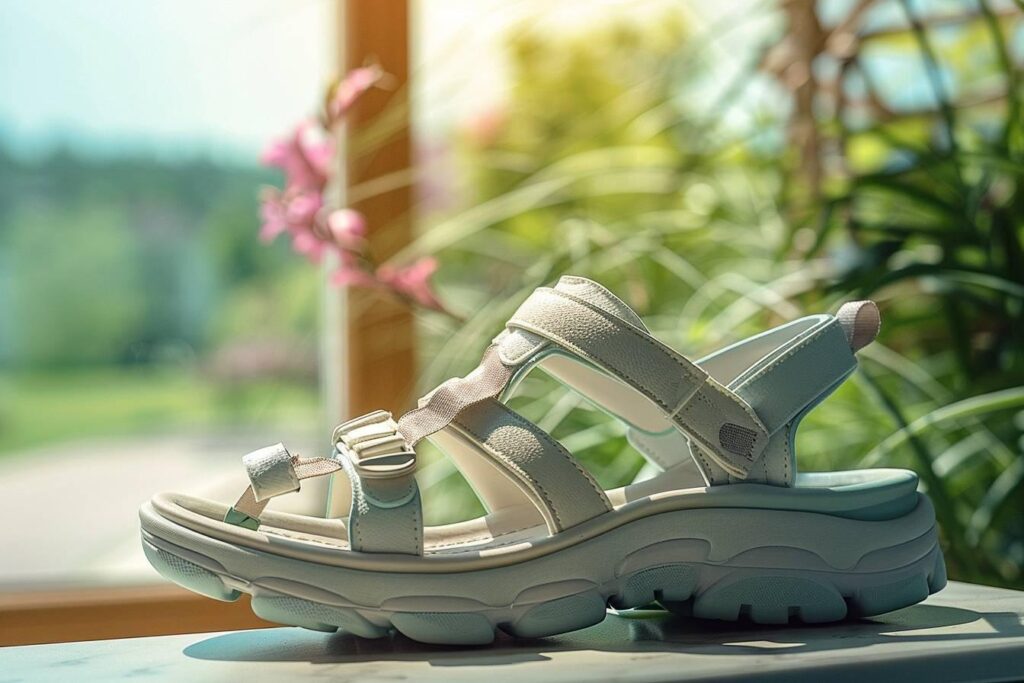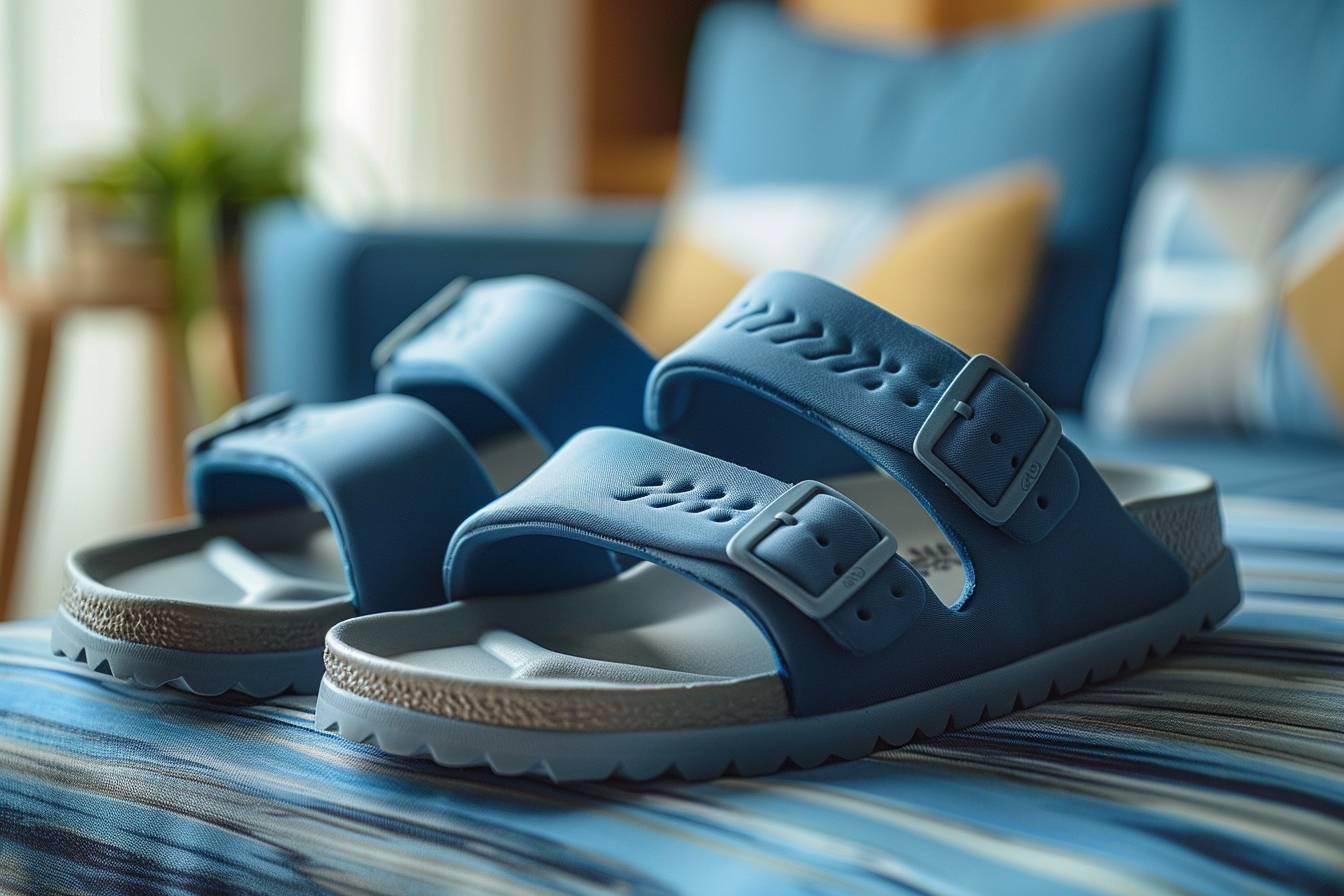Orthopedic sandals have gained popularity for their promise to improve foot health. But do these specialized footwear options actually deliver on their benefits ? This detailed examination explores the effectiveness of orthopedic sandals, addressing their potential advantages and limitations.
Benefits of orthopedic sandals for foot health
A primary reason many people turn to orthopedic sandals is their potential benefits for foot health. These sandals are designed to offer better support and comfort than traditional shoes.
Arch support and alignment
One significant advantage of orthopedic sandals is the integrated arch support. Proper arch support is crucial for maintaining foot alignment and reducing stress on the feet, ankles, and knees. Users often notice immediate relief from conditions such as plantar fasciitis and heel spurs. With adequate arch support, the risk of developing these foot issues can also decrease.
For an in-depth understanding of heel spurs, you may find this article on heel spur origins, characteristics, and complications quite informative.
Cushioning and shock absorption
Another benefit of orthopedic sandals lies in their superior cushioning and shock absorption capabilities. The materials used in orthopedic sandals, such as memory foam and rubber, can absorb impact more effectively than regular soles. This helps to cushion the feet during walking and reduces the strain on joints.
Breathability and moisture control
Orthopedic sandals are often made from breathable materials, which enhance air circulation around the feet. This feature keeps the feet cool and prevents excessive sweating and odor, promoting better overall foot hygiene. By maintaining dryness, these sandals also reduce the risk of fungal infections.
Conditions alleviated by orthopedic sandals
Orthopedic sandals are particularly effective for addressing several common foot conditions.
Plantar fasciitis
Plantar fasciitis is a painful condition caused by inflammation of the tissue along the bottom of the foot. The arch support and cushioning provided by orthopedic sandals can significantly alleviate the pain associated with this condition. For more detailed information, check this article on plantar fasciitis : origins, characteristics, and complications.
Bunions and hammertoes
Bunions and hammertoes are deformities that cause significant discomfort. Orthopedic sandals often have a wider toe box, which reduces pressure on these deformities, providing relief. The adjustable straps also allow for a custom fit, accommodating the unique shapes of different feet.
Rheumatoid arthritis
Rheumatoid arthritis can cause severe foot pain and joint inflammation. The cushioning and support offered by orthopedic sandals can ease the discomfort associated with this condition. A detailed exploration of this condition can be found in an article on rheumatoid arthritis : origins, characteristics, and complications.
Qualities to look for in orthopedic sandals
Not all orthopedic sandals are created equal. When choosing a pair, consider the following factors to ensure you select the best option for your foot health.
Material and construction
High-quality materials, such as leather and specialized synthetic fabrics, ensure durability and comfort. The construction should be robust, with well-padded straps and a supportive sole that can withstand daily wear.
Adjustability
Orthopedic sandals with adjustable features, like Velcro straps or buckles, allow for a personalized fit. This customization ensures that the sandals support the unique contours of your feet and avoid areas of discomfort.
Design and aesthetics
While functionality is paramount, the design and aesthetics of orthopedic sandals should not be overlooked. Modern orthopedic sandals come in various styles, so you don’t have to sacrifice fashion for comfort. Whether you need a casual pair for everyday wear or something more formal, there are stylish options available.
Potential drawbacks of orthopedic sandals
Despite their many benefits, orthopedic sandals do have some potential drawbacks that must be considered before purchasing.
Price point
Orthopedic sandals tend to be more expensive than regular footwear. The advanced materials and design features contribute to the higher cost. However, the investment in foot health may justify the expense for many people.
Style limitations
Although there are stylish options, some orthopedic sandals may still lack the variety found in traditional footwear. This limitation can be a drawback for those who prioritize fashion.
Break-in period
Orthopedic sandals may require a break-in period before they become entirely comfortable. Initially, they might feel stiff or cause minor discomfort as your feet adjust to the new support structure.
Final thoughts on orthopedic sandals
In conclusion, orthopedic sandals can provide significant benefits for those suffering from foot conditions like plantar fasciitis, heel spurs, bunions, and rheumatoid arthritis. Their superior arch support, cushioning, and adjustability make them an excellent choice for enhancing foot health.
However, potential buyers should weigh the higher cost and possible style limitations before making a purchase. Orthopedic sandals represent a valuable investment in foot health, promising more comfort and better overall well-being.
Ultimately, the efficacy of orthopedic sandals largely depends on individual needs and preferences, making it essential to choose the right pair carefully.
| Feature | Orthopedic Sandals | Regular Sandals |
|---|---|---|
| Arch Support | Enhanced | Minimal |
| Cushioning | Superior | Standard |
| Material Quality | High-end | Varies |
| Price | Higher | Lower |
| Style Variety | Moderate | Wide |

